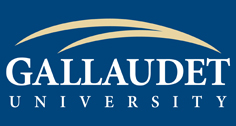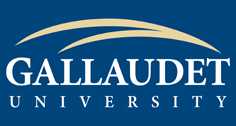[ad_1]

With Mellon’s support, Gallaudet now has the opportunity to establish an innovative, global 21st century model for visual learning and help create greater access, inclusion, and equity for deaf students.
WASHINGTON (PRWEB)
October 12, 2020
Gallaudet University announced today that it has been awarded an $800,000 grant by The Andrew W. Mellon Foundation to advance visual-centric teaching and learning for deaf students worldwide.
The three-year grant will allow Gallaudet to create a new worldwide model for improving the overall quality of teaching and learning for deaf students and other students who learn best visually. Gallaudet will use the Mellon grant to develop an innovative digital pedagogy that is visually centered, grounded in American Sign Language (ASL) and English bilingualism, and culturally responsive.
In 1864, President Abraham Lincoln signed Gallaudet’s charter with the unique purpose of providing visually accessible higher education. Today, Gallaudet remains the only university in the world providing deaf and hard of hearing students with a bilingual education in ASL and English.
“Gallaudet is honored to have been awarded this important grant by The Andrew W. Mellon Foundation,” said Roberta J. Cordano, president of Gallaudet University. “Deaf people live and learn through a visually-based language, yet the majority of classrooms are largely based on spoken language, even in today’s new era of remote learning. With Mellon’s support, Gallaudet now has the opportunity to establish an innovative, global 21st century model for visual learning and help create greater access, inclusion, and equity for deaf students.”
Gallaudet’s grant project will address several key areas of teaching and learning, including access to visual-centric bilingualism; culturally responsive and trauma-informed education; and
digitally adaptive learning matched to the strengths and needs of visual learners. The trauma-informed education model, for example, will address interactive and visual approaches to conflicts and issues using interactive theater.
Key expected outcomes and benefits of the Visual-Centric Teaching and Learning project, include:
- redesigning campus-wide professional development curriculum to integrate visual-centric, ASL and English bilingual, culturally responsive, and trauma-informed pedagogy;
- establishing faculty mentors and coaches to implement the pedagogy;
- redesigning of teaching strategies and course content to establish multiple approaches to address important social issues, including racism, sexism, economic injustice and audism;
- training for faculty and staff with Bilingual Approaches and Multicultural Curriculum Transformation seminars;
- redesigning of more than 100 courses for the visual-centric, bilingual, culturally responsive, and trauma-informed pedagogy; and
- establishing an extensive digital video library of exemplary best practices.
A key goal of the Visual-Centric Teaching and Learning project is to address ongoing social inequities deaf students and other linguistically diverse learners continue to face. According to Gallaudet University, inadequate access to visual language and learning remains a critical societal issue. Additionally, more than 90 percent of deaf and hard of hearing children are born to hearing parents where spoken language, not American Sign Language, is used at home. Even when families choose to learn ASL, young students who are deaf and hard of hearing are usually not educated in ASL and English bilingual learning environments. These and other factors result in deaf students continuing to be underrepresented in higher education.
Gallaudet University, federally chartered in 1864, is a bilingual, diverse, multicultural institution of higher education that ensures the intellectual and professional advancement of deaf, hard of hearing and deafblind individuals through American Sign Language and English. The university enrolls over 1,300 students in more than 40 undergraduate majors, as well as many graduate programs at the master’s and doctoral level. It also conducts much research in a variety of fields, including brain imaging, educational neuroscience, education, linguistics, psychology, Deaf history and culture, and Black Deaf history and culture.
Media contacts
The Durkin Agency
Alana Cowan
alanacowan5@gmail.com
Gallaudet University
Robert Weinstock
robert.weinstock@gallaudet.edu
Share article on social media or email:
[ad_2]

